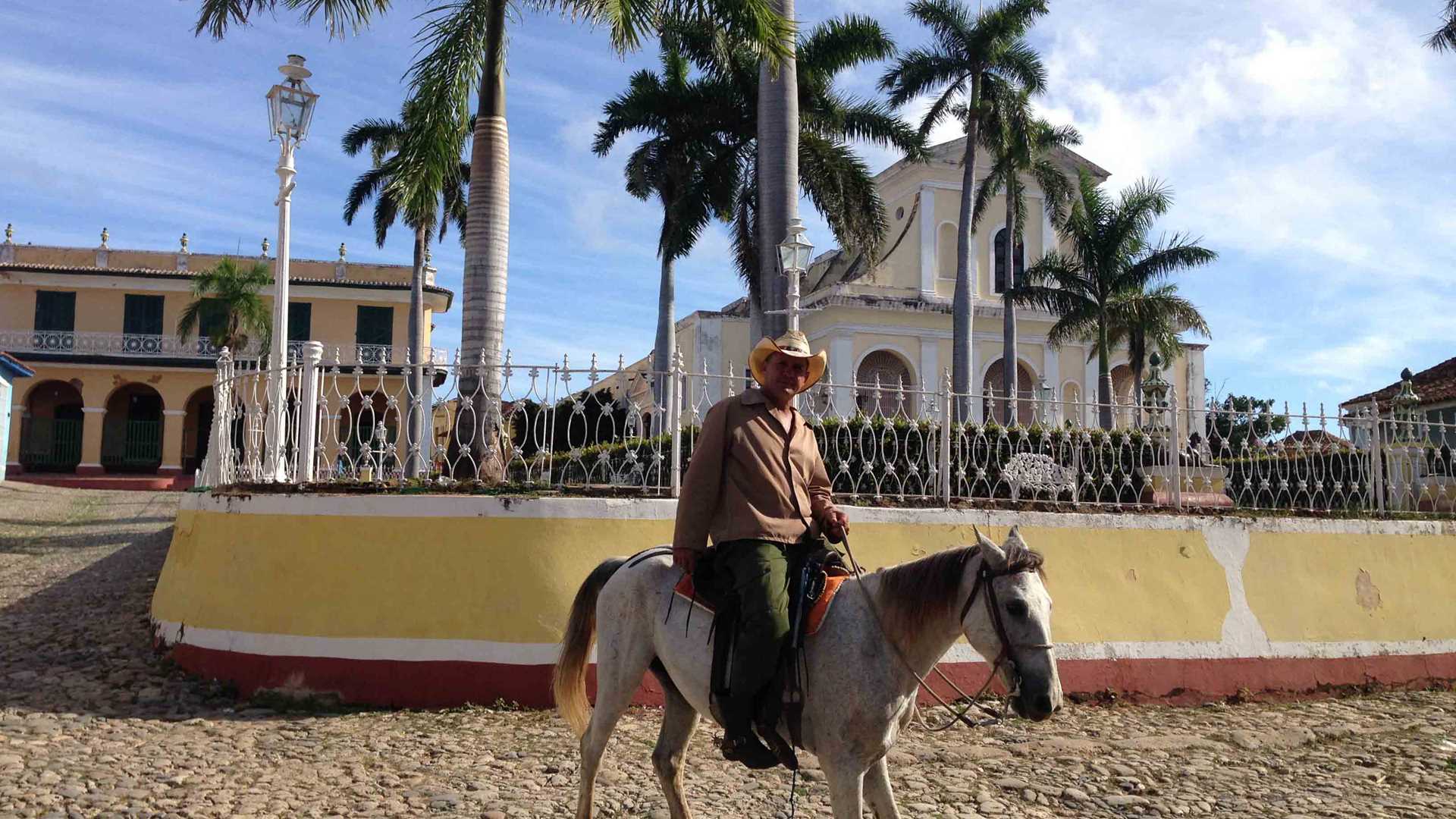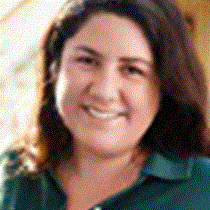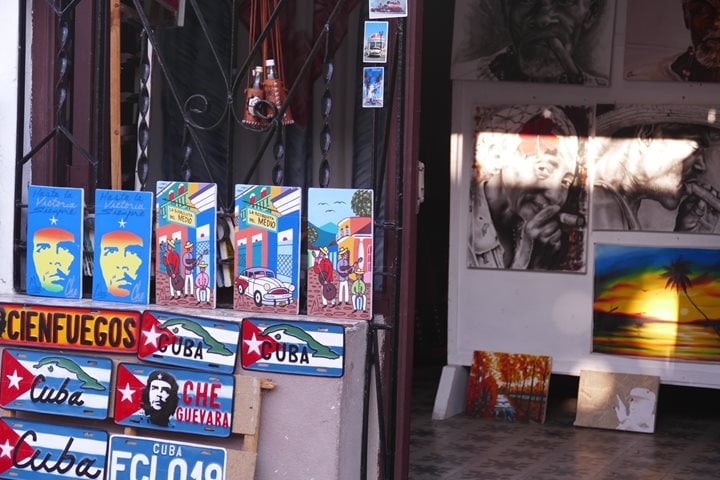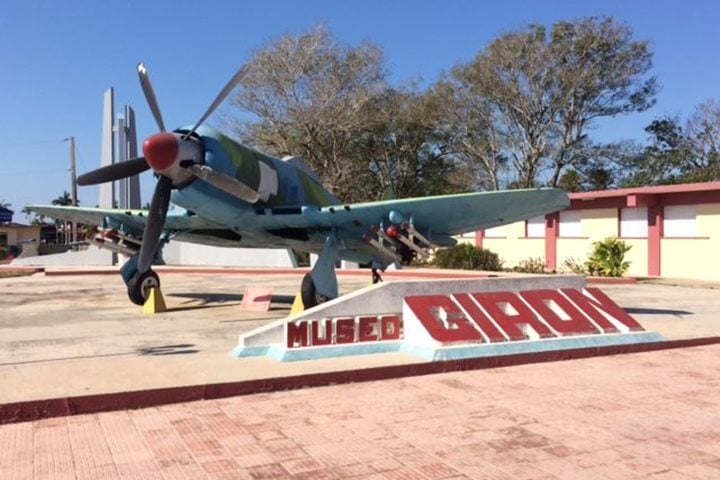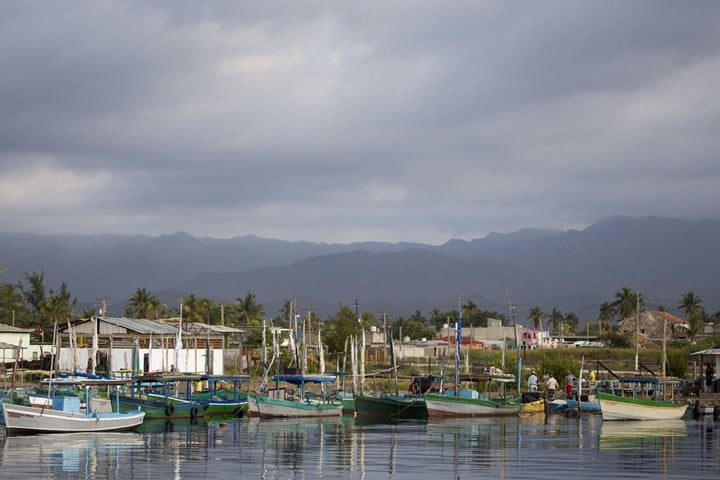Early in the morning we entered the large bay of Ensenada Casilda. Buses were ready to take us for the different options. Half of the group headed to Trinidad and Valle de los Ingenios, while the other half went to Tope de Collantes and Trinidad as well, but in the afternoon.
Trinidad is a UNESCO World Heritage site since 1988. A busy city where people keep their doors and windows open all day, as they are proud to show the beautiful furniture made from Cuban wood, the 18th century lamps hanging from the ceilings or the amazing embroidery they are famous for.
We explored Trinidad on foot, being able to interact with different artists and people on the streets. We visited the home of a Santero, who gave us a detailed explanation about the origin of this religion and some of the rituals. Israel spoke slowly and proudly about the syncretic elements in “Santeria”. He is dedicated to Yemalla, which in catholic religion would be Virgin Mary. His temple is in white and blue, as Yemalla is the water, the energy in life, maternity; she is the patron of fishermen and the symbol for family. They believe that life comes from the water, such as a fetus lives from the placenta of its mother for nine months. Israel tells us “Slaves had to cure themselves, had to get to know the new plants, and some of the medicine they invented long ago, is now in use in Cuban medicine”. Africans accepted the catholic god, to go to heaven, and from heaven, head back to Africa. They didn’t believe in hell, as Cuba was already their hell”.
Another highlight was to talk to Lazaro Niebla, a wood carving artist who captures the faces and feelings of Cubans in wood. His wife, Liani Hernandez, offered us the most famous drink of Trinidad, the canchanchara; she mentioned that it has the very important vitamin R (Rum), together with honey, lemon and water. This gave the strength to slaves, who had to work endless hours under the sun. This area had up to 300.000 slaves brought from Africa, to work the fields and process the sugar cane, as Trinidad was one of the most important exporters of sugar in the late eighteenth and beginning of nineteenth centuries.
We had our first lunch of the New Year at Guitarra Mia, a lovely “paladar” which belongs to the Santander family, a family of artists as well. Little guitars decorate the walls, painted in different colors, as the father is a famous “trovador” (local singer) from Trinidad, and as the son is into painting. Their business started 7 years ago, and we enjoyed the welcoming ambience created not only by the decoration, smiling waiters, but also by our own “trovador”, Ediani, who played for us all kinds of Cuban music. I particularly enjoyed the songs from Silvio Rodriguez and Pablo Milanes, who are some of the most famous and internationally renowned Cuban singers.
For the afternoon we visited Guaimaro, an old sugar plantation where Carmen, the museum guide, took us through each of the rooms and the history of this place.
“They had 360 men slaves and 18 women in the most successful times of the Marques de Guaimaro, in 1827. After the revolution this house gave shelter to seven families, but three years ago it became a museum. It had been pretty destroyed, people thought there was a treasure hidden in the floor. But now I don’t let anybody move a pebble. I was educated as a technician to take care of this museum and guide you through”.
In the mean time, half of our group had gone to The Sierra del Escambray, which is a rugged mountain range rising inland from the Caribbean coast; our goal was Tope de Collantes at 600 meters high. Coffee is farmed on the lower slopes, while the densely forested upper slopes are of great ecological value for their plants and profuse birdlife. They drove up, to the Park headquarters, where our local guide, Nancy, joined to continue with the adventure by Russian truck! As she pointed out, it was quite the combination! A Russian truck powered by a Chinese engine driven by a Cuban! The roads were steep, the vegetation close on both sides, and the air was cool and fresh, humidity lower. They were surrounded by lush and tropical forest: Cecropia trees, Royal Palms (the national tree of Cuba), Caribbean pines, eucalyptus, gumbo limbo, Melaleuca, acacias of all kinds and the most beautiful, the lovely tree ferns. They were able to access a cave with stalagmites hanging from the ceiling.
What a lovely way to spend the first day of 2018. It will all go well, as we followed the tradition of burning the year ending, wearing yellow underwear, and dancing until the first hours of the New Year. We celebrated as one should! Reading the will of the year ending and with several contests and colorful necklaces. What else can we ask for? Happy New Year to you all! Happy New Year Cuba, Happy New Year Dear Planet!

